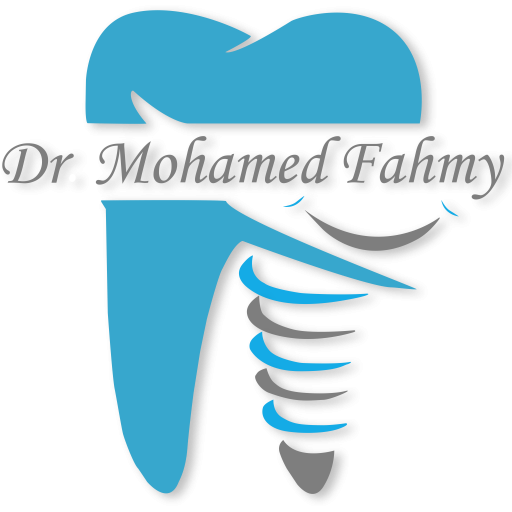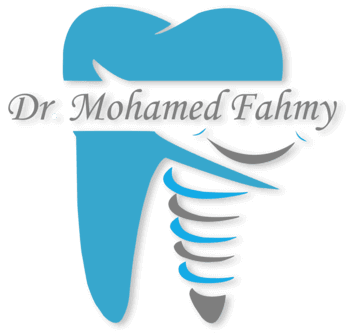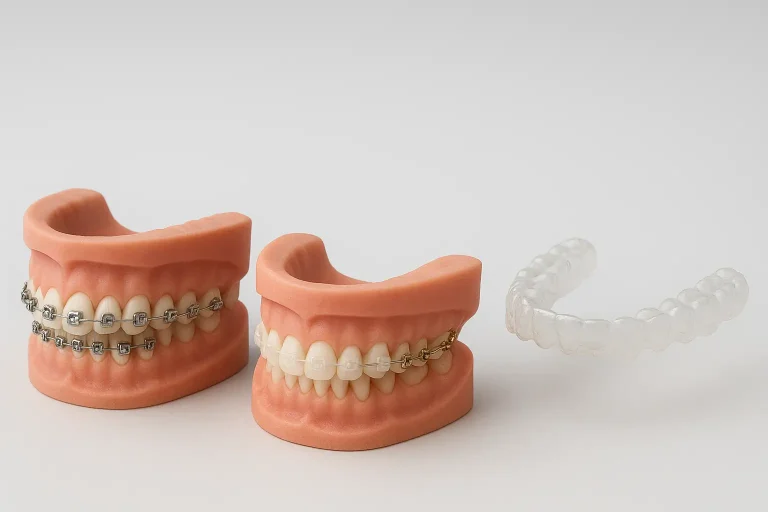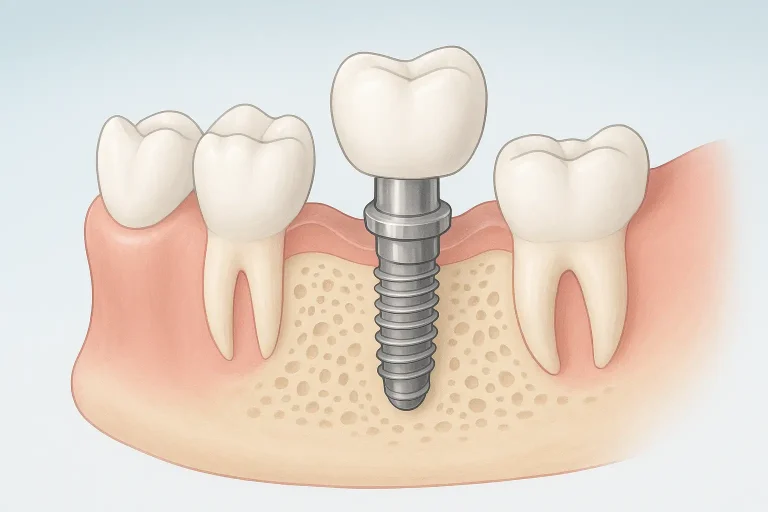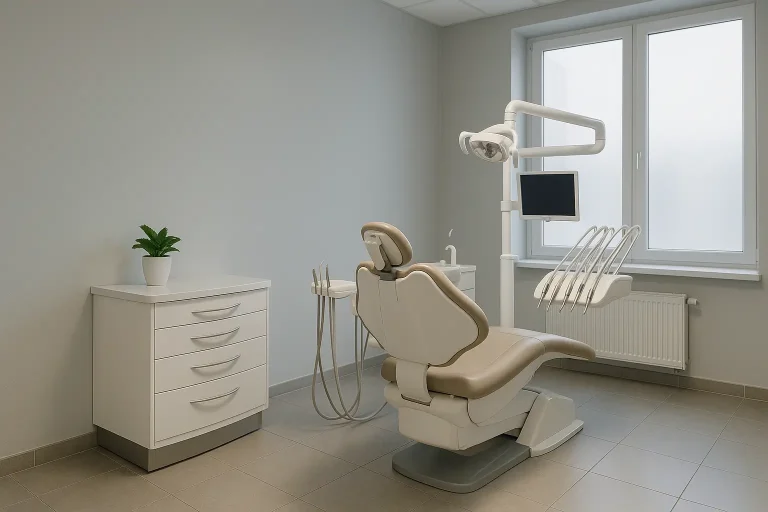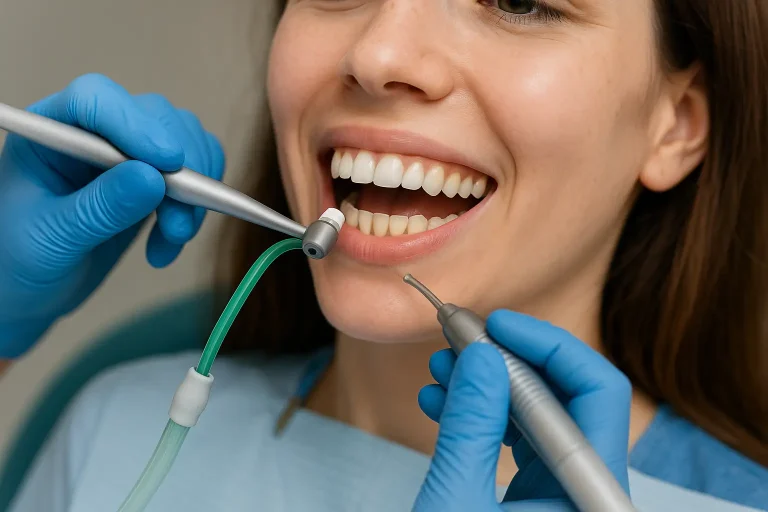Book Appointment Now
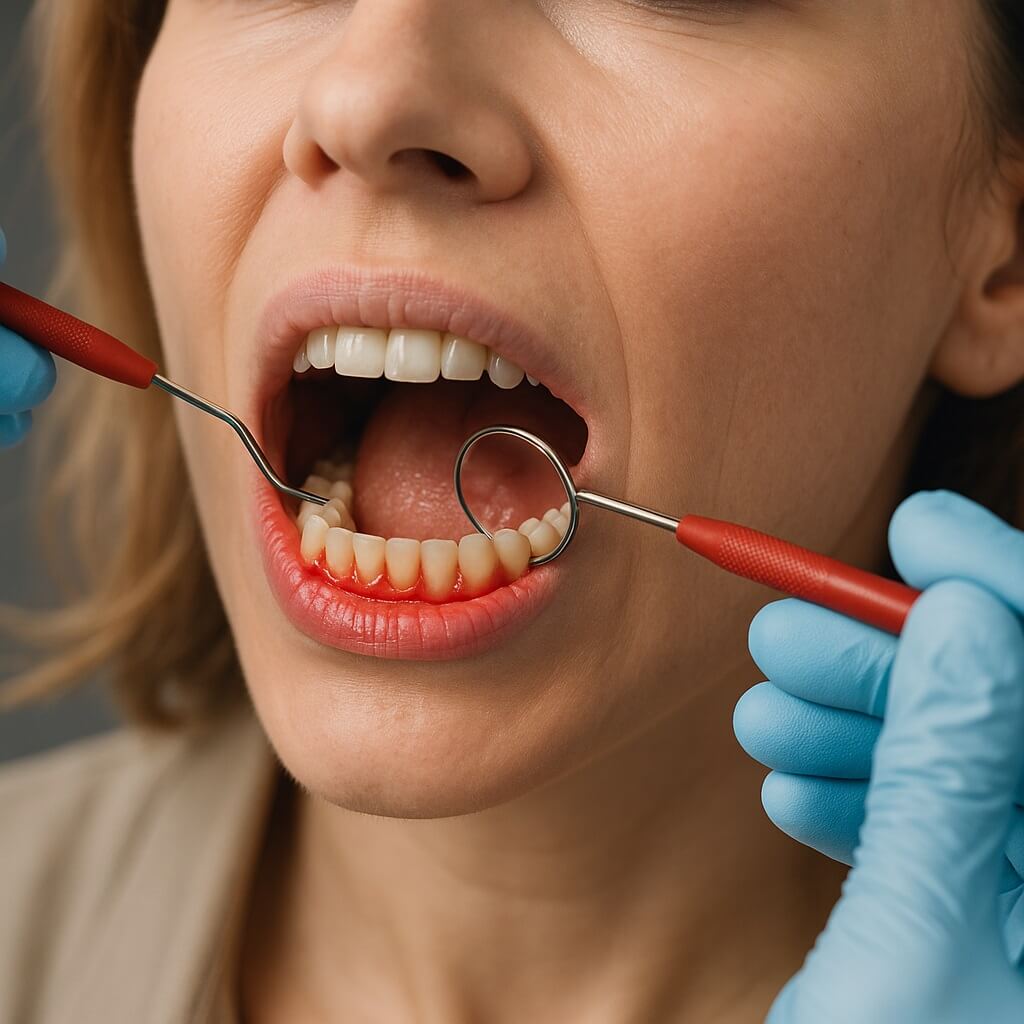
Top 10 Home Remedies for Gingivitis and Instant Pain Relief
What is Gingivitis?
Gingivitis is a common oral problem that often begins with mild irritation or slight redness of the gum tissue, and it may progress to bleeding during brushing. In most cases, the main cause is the buildup of plaque—a layer of bacteria that forms after eating. If not removed by regular brushing, it hardens into tartar, which irritates the gums and causes inflammation.
Many people ignore early signs like mild bleeding or unpleasant breath, allowing the condition to worsen unnoticed. It can develop into more serious issues like periodontitis or even tooth loss if not treated early.
Causes of Gingivitis and How to Prevent It
There are several key causes of gingivitis, including:
- Not brushing teeth regularly
- Using an old or inappropriate toothbrush
- Neglecting to use dental floss
- Continuous smoking
- Hormonal changes or chronic diseases like diabetes
To prevent gingivitis:
- Brush your teeth at least twice a day with fluoride toothpaste
- Don’t forget to floss daily to remove food particles between teeth
- Use an antibacterial mouthwash to reduce bacteria
- Visit your dentist twice a year for tartar removal and oral health checkups
- Make sure to consume vitamins C and D to support gum health
Symptoms of Gingivitis and When to See a Dentist
In the beginning, you may not feel any pain. But over time, there are clear signs you shouldn’t ignore:
- Redness and swelling in the gums
- Bleeding when brushing or flossing
- Mild or persistent pain in the gums
- Bad breath that doesn’t go away
- Gum recession and visible tooth roots
If these symptoms persist for more than a week, consult your dentist immediately.
Book your appointment now for a dental cleaning and a gum health check.
Are you experiencing gum inflammation or bleeding? Don’t wait for the condition to worsen. You can now book an appointment with a dental specialist for tartar removal and a thorough examination. Book your appointment today.
The Difference Between Gingivitis and Periodontitis
People often confuse gingivitis with periodontitis, although they’re very different:
Gingivitis:
Surface-level inflammation, easy to treat if caught early
Periodontitis:
Deeper inflammation that affects the bone around the teeth and may lead to tooth loosening or loss
Early diagnosis is key to preventing serious complications.
Top 10 Ways to Treat Gingivitis at Home
Below are the best at-home methods to reduce gingivitis symptoms and promote healing. Each method is briefly explained for easy application:
Salt Water Rinse
A natural and proven way to reduce inflammation and kill bacteria. Mix ½ tsp of salt in a cup of warm water and rinse twice daily.
Medical Mouthwash like Chlorhexidine
Helps reduce plaque and improve gum health quickly. Use it after consulting a dentist and not for more than two weeks.
Soft Toothbrush
A soft-bristled brush prevents gum irritation during cleaning and protects sensitive tissues from damage.
Dental Floss
Effectively removes bacteria and food particles between teeth. Use at least once a day.
Coconut Oil Pulling
Has antibacterial properties. Use it in the morning to rinse your mouth for 5 minutes to boost oral health.
Aloe Vera Gel
Applying aloe vera gel directly to inflamed areas soothes pain and speeds up tissue healing.
Cold Compress
Place a cold compress on the cheek near the affected area for 10 minutes to instantly reduce swelling.
Quit Smoking
Smoking restricts blood flow to the gums and hinders healing. Quitting is vital for full recovery.
Tongue Cleaning
The tongue can harbor bacteria. Cleaning it daily prevents bacterial transfer to gums and improves breath.
Vitamin C & D Supplements
They help boost the immune system and support damaged gum tissues, accelerating recovery.
Over-the-Counter Medications for Gingivitis
When the condition worsens, you may need medication along with home care:
- Medical mouthwashes like Chlorhexidine
- Topical gels with antibacterial agents like Metronidazole
- Antibiotics prescribed for severe cases
- Pain relievers like Paracetamol or Ibuprofen to reduce pain and inflammation
Treating Gum Swelling at Home
If you notice gum swelling:
- Use cold compresses on the cheek for 10 minutes
- Rinse with saltwater or an antiseptic mouthwash
- Avoid hard or spicy foods until swelling subsides
Tried and True Natural Remedies for Gingivitis
Clove Oil:
Apply with a cotton swab to the affected area for pain relief
Chamomile:
Use as a mouth rinse to reduce irritation and inflammation
Honey:
Apply directly to the gums for its antibacterial benefits
What if Gingivitis Has No Clear Cause?
Sometimes, gum bleeding or pain may occur without an obvious reason. This could be due to immune system changes, vitamin deficiencies, or hidden tartar buildup. A dental visit is essential to determine the exact cause.
Managing Severe Gingivitis at Home
Severe cases require medical intervention, but you can help calm the condition by:
- Using a strong mouthwash like Chlorhexidine
- Applying topical gel twice a day
- Using cold compresses to reduce swelling
- Getting rest and taking anti-inflammatory medications if needed
What is the Best Treatment for Gum Inflammation and Swelling?
Combining home remedies with medication offers the best results:
- Consistent and thorough teeth cleaning
- Antiseptic mouthwash twice a day
- Vitamin-rich nutrition
- See your dentist if symptoms don’t improve within a week
FAQs
What’s the fastest way to treat gingivitis?
Using a medical mouthwash, saltwater rinse, and topical gel can quickly ease symptoms.
Can gingivitis be cured at home?
Yes, in mild cases. Advanced cases require a dentist.
Are there effective herbs?
Yes, clove, chamomile, and raw honey are helpful as natural aids.
Is bleeding during brushing normal?
No. It’s an early sign of gingivitis and shouldn’t be ignored.
Is gingivitis linked to other diseases?
It may be associated with heart disease or immune issues if left untreated.
Conclusion
Prevention is better than cure. Daily care, regular checkups, and quick action when symptoms appear ensure excellent oral health and a long-lasting smile. Don’t ignore minor signs like bleeding gums and bad breath—they could indicate something more serious.
